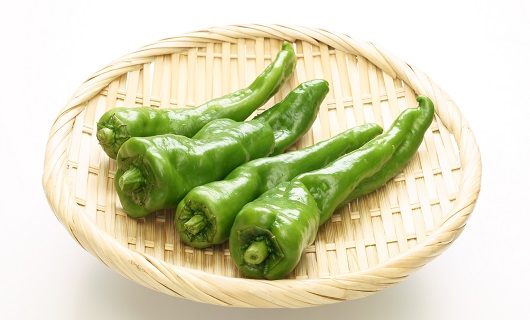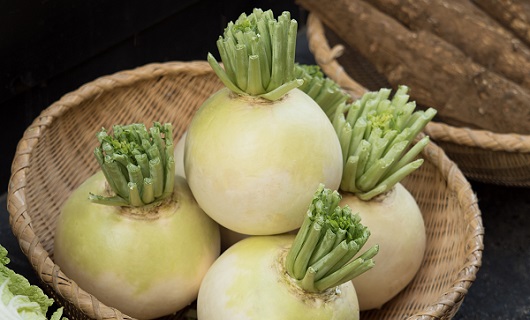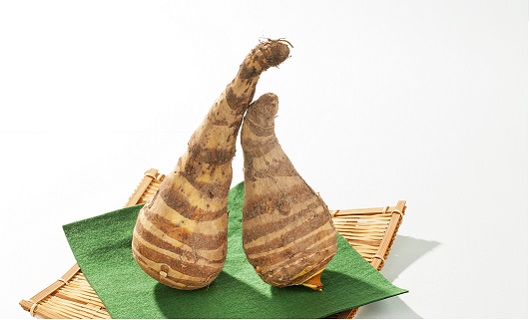
Kuromame
"Tamba Kuromame" are high-quality black soybeans mainly produced in the Tamba area such as Kyotamba Town and Nantan City in Kyoto Prefecture. In particular, black soybeans have a long history of cultivation, and in the 10th century records from the Heian period described their existence as "Karasumame", and in the 16th century list of the offerings to the Imperial Court "Kuromame" was also recorded. Kuromame are grown in a climate where the land is fertile and there is a large temperature difference between day and night, so they tend to be large, wrinkle-free, shiny and black with a rich taste. They are served as part of Osechi, a traditional Japanese New Year's meal, with the hope that the black soybeans will bring longevity and good health, "wishing that the individual will get tanned and work hard for many years to come".

Manganji Togarashi
"Manganji Togarashi" is one of the most famous local products of the Chutan region, Kyoto Prefecture. The bright green peppers are so large and thick that they are often referred to as the "king of peppers" because of their size. The name "Manganji Togarashi" comes from Manganji Temple, an ancient temple in Maizuru City, where it said to be originated. In the late Taisho period, farmers began to grow it as a vegetable for their own use, but it gained a reputation for its deliciousness and began to appear on the market in the late 1990s. In addition to Maizuru City, it is grown in some areas of Ayabe City and Fukuchiyama City and shipped under the "MANGANJI AMATOU" trademark. The flavour of the peppers is sweet and spicy, and the texture is thick and soft, making it an ideal Kyoto summer vegetable.

Shogoin Kabu
Shogoin Kabu (turnip) is one of the traditional vegetables of Kyoto. It is said to have originated in the Kyoho era when a farmer in Shogoin, Sakyo Ward, brought back the seeds of Omi turnip which had been cultivated in Otsu City, Shiga Prefecture, and began to grow it. The distinctive feature of this turnip is its eccentric circular shape, which differs from that of ordinary turnips, and it is said that this was achieved through meticulous selection and improvement. It is the largest turnip in Japan, weighing upto 4kg and 5kg, and is known for its soft and elegant taste. It is said that the Shino district of Kameoka City, which is currently a famous production area for turnips, is suitable for the growing environment of turnips due to the temperature difference between morning and evening, fog peculiar to the basin-shaped areas, and climate, and production has flourished. Most of the "senmaizuke" produced in Kyoto uses turnips from this area.

Ebi-imo
Ebi-imo is grown mainly in the Yamashiro area of Kyoto, where the soil should be deep, well drained and moist. "Ebi-imo" is a type of Japanese sweet potato, produced by different methods of cultivation rather than by variety. It is said to be named after its shape, which is curved like a shrimp. The flesh is dense and sticky, and is one of the best tasting traditional vegetables in Kyoto.
